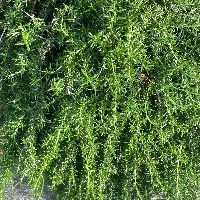Ground cover Part 2
- NZ Landscaper
- Jan 1, 2022
- 1 min read
Updated: Mar 28, 2022

In any great garden design, the icing on the cake is the covering of the ground – that last finishing touch once you have the trees, shrubs and climbers in place. In this two-part series, plant expert Penny Cliffin offers tips on the top groundcovers for gardens of every kind
Ground covers have many functions – weed supression, water conservation, promoting microbial life, insect and lizard habitat, and food for pollinators and people.
Different groundcovers (plants that can form massed effects of less than a metre in height) suit different growing conditions and vary in the scale of space they will fill.
Below is a guide to ground cover options with an ecological/sustainable focus – food for pollinating or beneficial for insects, lizards, birds or people.

Penny Cliffin has a degree in horticulture, practiced as a garden designer and has over 20 years lecturing experience, all of which gives her extensive plant knowledge.
Penny is also a founder, accredited academic member and past President of the Garden Design Society of New Zealand (GDSNZ).












